 |
"Great Sound, Plus An Expansive Set Of Features!”
|
Brevis
Price $1,995
Likes: Sonic Q, features galore
Dislikes: logo lighting colors?
by John Gatski
I have been a big fan of Michal Jurewicz’s Mytek A/D and D/A designs since early 2003 — working extensively with the pro converters in my old days as editor in chief of Pro Audio review.
Mytek has morphed from a strictly pro to pro and hi-fi digital converter company over the last 10 years, making such esteemed products as the Mytek Stereo 192 A/D and D/A, professional multichannel DSD A/D-D/A, and the venerable Manhattan D/A with its custom analog attenuator.
Now comes a new generation of Mytek converters including the Mytek Brooklyn reviewed here. A new Manhattan II is coming as well.
Features
Priced at $1,995, the Brooklyn takes the convenience and size of the Stereo 192-DSD DAC — adding a slicker interface and improving the overall sonic accuracy via the line stage and headphone amplifier. The Brooklyn can handle up to 32-bit integer/384 PCM (it’s coming folks) and 4X DSD via USB2 connection.
The new DAC also includes the recently released MQA (Master Quality Authenticated) decoder. MQA is coding scheme that is said to allow high-res music to be streamed from such sources as Tidal at a much lower rate than a normal high-res sized download. Other features include an excellent headphone amplifier, a MM/MC phono preamp, word length/sample rate display, and the slick-looking graphical interface. It also has digital connections for DSD sources.
In terms of accurate conversion, the Brooklyn really nails it as a serious, quality D/A converter, but it is so much more — with nearly all the bells and whistles any audiophile could want: line preamp, phono preamp, headphone amp, analog/digital volume choice, and the MQA decoder.
The new DAC also includes the recently released MQA (Master Quality Authenticated) decoder. MQA is coding scheme that is said to allow high-res music to be streamed from such sources as Tidal at a much lower rate than a normal high-res sized download. Other features include an excellent headphone amplifier, a MM/MC phono preamp, word length/sample rate display, and the slick-looking graphical interface. It also has digital connections for DSD sources.
According to Mytek’s Jurewicz, the ergonomic ease of use and interface are obviously a step up over the Stereo 192-DSD, but the sonic improvements are quite audible. Audio path upgrades include:
•Utilization of the newer Sabre 9018 chip (increased detail)
•Addition of a 0.82ps Femtoclock;
•Two-output (with optional) balanced, dual-mono headphone amp with 2X the power of the Stereo 192-DSD;
•Much improved user interface with OLED displays;
•Mytek Control Panel software enables control from computer, in the future also via iPad;
•New USB Class 2 interface, low latency, full integer 32-bit USB interface, driverless for Mac and Linux, improved clocking and lower EMI.
Like the Stereo 192, the half-rack Brooklyn is a busy little box. The front panel sports the two headphone jacks, two left-side function buttons, the center OLED screen, two right-side function buttons, and the multifunction volume control, which doubles as on/off switch and mode selector.
 |
| Most any source will work with Brooklyn |
The back panel is filled to the brim as well: a pair of balanced analog outputs, a pair of analog RCA/phono inputs, a pair of analog RCA outputs, two SPDIF/DSD coax inputs, SPDIF/TOSLink/ADAT optical input, word-clock sync BNC I/Os and, er, a phono ground lug. That’s right folks, this DAC contains a bonafide phono preamp. It also has a 12V port for powering via battery, an option more likely to be used by remote pro engineers.
The Mytek Brooklyn was designed with two volume controls: a 32-bit, 192-dB DR digital onboard control built into the ESS 9018 chip circuit, and a modified analog volume control with Mytek’s special brew of analog parts. The analog volume control imparts a touch more smoothness and familiar shading that you would except from an good analog volume.
Deep feature set
Because of the vast number of input options and adjustment parameters available, the Brooklyn requires a bit of familiarizing with the multi button menus and the OLED screen. But it only takes a lap or two around the controls and buttons to learn the functions
Parameters, including input selection, are engaged via the two buttons on the left side of the screen and the two buttons on the right side of the screen. The volume control allows toggling through the categories in each window, and pushing the volume control selects the parameters.
The most leftward button engages the Input mode, Coax function, Analog input options, Power-on options and Device info. Pushing the button and then rotating the volume control to Input mode shows the various options: USB, AES/EBU, SPDIF 1, SPDIF 2, Optical and Analog. Select an input and push the volume knob, To disengage from the input mode, push the menu button again.
Listening to the LP’s via a Clear Audio Emotion belt-drive turntable and a Benz L04 MC cartridge, the preamp did itself proud. It lacked the euphonic warmth of some of the high-end tube preamps I have auditioned, but its balance, low noise and audible detail, made for a good match with the Benz cartridge.
Pushing the button again and then rotating the volume control one click engages the Coax function, which allows the choice between PCM or DSD via SDIF /SPDIF using the digital coax. Another push of the leftward menu button and volume control click enables the Analog options mode. This mode allows the user to select analog line input, or phono preamp mode — MM or MC. The last modes controlled by the first button are Power (Auto/Standby/Work) and Info, which shows the unit’s serial number and allows the firmware to be restored to original settings.
The second menu button enables Volume Control while in the setup mode (otherwise you control it in the display mode), MQA decode enable/disable, Logo Light brightness level, PCM filter slope (three options).
Menu Button 3 (immediate right side of display) enables Digital Sync (internal/external clock), Volume Control-select (analog or digital), Standby Light brightness level, and DSD Filter (three options). The fourth menu button selects Output (HP/Main/Both), Volume Control Bypass, Logo Light Color (16 different colors, whew!) and Remote Control option.
There are a lot of operational options, but the Brooklyn is much easier to navigate than the Stereo 192-DSD DAC’s menus and a million percent easier to change parameters than the original Manhattan I. (Hopefully, the new Manhattan II will get some of the functionality of the Brooklyn).
The Mytek Brooklyn is one of the first DAC’s to be equipped with MQA decoding. MQA-encoded music is claimed to deliver hi-res quality for streaming, contained in a smaller file size than conventional PCM hi-res files, typically 24/96 or 24/192. Additionally, MQA applies a “deblurring” process that is said to restore proper “timing,” which is claimed to be more faithful to the original source recording.
The Mytek Brooklyn is one of the first DAC’s to be equipped with MQA decoding. MQA-encoded music is claimed to deliver hi-res quality music for streaming, contained in a smaller file size than conventional PCM hi-res files, typically 24/96 or 24/192. Additionally, MQA applies a “deblurring” process that is said to restore proper “timing,” which is claimed to be more faithful to the original source recording.
There has been a full marketing blitz on MQA with mainstream audio press singing its praises. However, since there is not that much music out there, I am holding my full opinion until I do more critical listening.
Of the few bits of MQA I have heard, including a brief sampling of the 2L label’s 24/352 original recordings and their MQA-processed versions, MQA sounds to my ear like there is some lossiness. For example, On the 2L Mozart — Violin Concerto in D recording (24/352 DXD original PCM recording), which I use for demos and have listened to more than 200 times since 2012, I found that the MQA version did not sound as dynamic as the original.
The MQA was a touch smoother, similar to DSD, but the violin harmonic textures did not seem as fleshed out. BTW, the MQA version reduced the size of the original DXD 24/352 FLAC from 700 MB to under 100 MB in the FLAC format. So it is quite effective in terms of file-size efficiency.
Although I am somewhat ambivalent about MQA, based on the 2L samples I heard, I need to listen to more original PCM vs. MQA -processed samples to make up my mind. So far, there is not a dearth of MQA/original comparison files out there.
The set up
I installed the Mytek Brooklyn DAC in several listening scenarios. Its versatility made it a natural for the audiophile rack, the home recording rig — and as a computer DAC.
In the audiophile room, the Brooklyn was connected to a Coda high-current preamp, which fed a Pass Labs X350.8 MOSFET output amplifier. Sources included Oppo BDP-105 universal player, Dell Venue tablet with USB Audio Player Pro (with the bit-perfect upgrade) and a TASCAM DA-3000 hi-res stereo recorder/player for playing DSD home recordings. The Pass amp powered a pair of MartinLogan Montis electrostatic speakers
.
.
 |
| Comes in an attractive silver platinum... |
Wireworld Eclipse speaker, analog interconnect and digital interconnect were used to link the components. Essential Sound Products Essence II power cords and power strip provided power to the various components in the evaluation system.
For comparisons, I had the previous generation Mytek Stereo 192-DSD DAC, the Mytek Manhattan I, as well as a Benchmark DAC2-DX DAC. For headphone listening, I used AKG K812s, K702 Anniversary and a pair of Oppo PM-2 planar magnetic headphones in balanced mode for evaluating the headphone amplifier.
As mentioned, considering how many features are jammed into the Brooklyn, it is quite easy to adjust the settings: inputs, input assignment, digital filters, phono settings are readily accessible via the menu buttons and a few volume control turns and pushes.
As a proponent of word-length display in D/A converters, I am happy that Mytek shows both PCM word length and sample rate in the main screen, all the way to 32-bit integer. With computer playback’s potential to default to 16-bit without the operator knowing it, all DACs should have a real-time, word length status indicator to validate the correct bit rate.
The audition
Via the audiophile rack, the first track up was, of course, Warren Bernhardt — So Real, the title track from the 2000 DMP DSD release. I immediately could hear the improvement over the previous generation Stereo 192-DSD DAC. Although there was familiar similarity in the two DAC sonic character, the Brooklyn relayed an increased openness in the space separation between the Steinway piano, bass and drum cymbals. The textures were also smoother and more refined via the Brooklyn, The metallic sheen of the brushes seemed more accurate on the newer DAC, whereas the older model was a bit more brash
On the “Autumn Leaves” track, which has a vast dynamic range, the loud parts were smoother through the Brooklyn. Yet the bass was tight and fast with no euphonic bloom. Switching to the digital volume control I detected a smidgen of edge on high-velocity transient sounds (piano), but it was still smoother than the analog volume on the Stereo 192-DSD.
 |
| For those who like their color on the darker side |
The Brooklyn really shined on a DSD-to-PCM dub of Gene Bertoncini — Body and Soul, a nylon string guitar recording. The intricate string plucks and the gorgeous soundstage were a pleasure to audition through the Brooklyn. The natural, smooth, yet dynamically subtle persona of a properly mic'd nylon string guitar can get lost with lesser DACs. Not the Brooklyn; it is one of the best DAC’s I have ever heard for this music genre.
Switching to Classical and pure-DSD playback, I played the Channel Classics DSD download of Telemann — “Suit in A: Concertos And Cantata — Ihr Völker Hört. I played the tracks from the TASCAM DA-3000 and output the DSD bitstream to Brooklyn’s SDIF inputs. This allowed me to judge the Mytek’s DSD playback.
The refined baroque music of Telemann gets the royal treatment via this recording — with a deep soundstage and natural ambiance that the Brooklyn-relayed perfectly. The woodwinds were breathy and melodic without being harsh. Using the Mytek’s clock sync with the DA-3000, I noticed a small reduction in the thickness of the midrange of the tracks over using the internal clock of the TASCAM. It was subtle, but after three plays, I clearly heard the upped precision of the dynamic transients.
Digital, analog, and vinyl too
Since the Brooklyn has a phono preamp I sampled several records, including a Puccini opera box set from the 1960s, and my clean copy of Wes Montgomery‘s landmark live recording: Full House, reissued a few years ago in a Steve Hoffman-mastered HQ vinyl.
Listening to the LPs via a Clear Audio Emotion belt-drive turntable and a Benz L04 MC cartridge, the preamp did itself proud. It lacked the euphonic warmth of some of the high-end tube preamps I have auditioned, but its balance, low noise and audible detail, made for a good match with the Benz cartridge. The LP playback was tight, and the high end showed some sparkle without too much bite; channel separation was typical of most phono pre’s and cartridge combos.
It’s not often you get a phono preamp in a DAC, but this one is better than many standalone, especially for those who like their LPs with a bit more honest flavor. The phono pre may be not a deal closer for digital focused auiophilsl, but for customers who want it all in a small box — with audio quality. — the Mytek Brooklyn may be the ticket.
 |
| Under the hood of the Mytek Brooklyn |
Switching to Pop/Rock and digital files, I played the 24/96 transfer of Fleetwood Mac’s “Dreams” hit single which is, of course, from the mega-popular Rumours 1977 album. This track is a great test for D/A converters — in that it has that classic multi-track, Rock recording persona — with neatly placed instrumentation, a well-centered main vocal and an enveloping backup vocal chorus. Though the recording was analog, it has a taut, crisp character. On less than stellar DACs, it can be bright and harsh. A good DAC can handle the nuance without being hard sounding or overly warmed over. Such is the case with Brooklyn. All that percussive energy, the air around the guitar tracks, and the chorus receive the royal treatment from the Mytek. The splashy cymbals are much smoother than the Stereo 192-DSD, but not in a filtered way; it sounds like the way it was recorded.
Listening to DACs
As I auditioned more than 40 albums and numerous single-cut hi-res samples of music with the Brooklyn, I did numerous A-B listening sessions with other DACs: the first-generation Mytek Manhattan I, acclaimed for its custom analog attenuator; and the Benchmark DAC 2-DX. I love the big soundstage of Manhattan's analog attenuator, but liked the Brooklyn’s dynamic presentation even more. And the stereo sphere is still very good. Plus, the Brooklyn’s is ten times easier to use than the Manhattan I.
The critically acclaimed Benchmark DAC 2-DX offers similar performance to the Mytek, though the DAC 2 might be a touch smoother. However, for the same money the Brooklyn offers so many more features: the MQA decoder, phono preamp, multi-DSD digital connection, filter options and, of course, the 16 flavors of logo light color options.
As for MQA, I did not have enough music that was encoded with the process to make a meaningful determination. Via the 2L tracks I downloaded and listened, I did notice an audible shrinkage when it came to the space between instruments and dynamics. The instrument’s individuality emerged more on the original recording. The MQA did impart a smoothing texture to the edge of the violin tone — kind of like DSD.
Maybe on different recordings, MQA does better. Once more recordings are released, we will have more-definitive listening sessions with Brooklyn and MQA-encoded recordings.
What is impressive is how Michal Jurewicz added tons more features, refined the PCM/DSD audio output and kept the Brooklyn at $2,000! The Stereo 192-DSD D/A was a great sounding unit. But the Brooklyn is exceptional in comparison. For dynamics and inner detail, I even like it better than the Generation 1 Manhattan, which was more than $5,000!
From my perspective, however, MQA is not the main selling point of Brooklyn. What is impressive, in the aggregate, is how Michal Jurewicz added tons more features, refined the PCM/DSD audio output and kept the Brooklyn at $2,000! The Stereo 192-DSD D/A was a great sounding unit. But the Brooklyn is exceptional in comparison. For dynamics and inner detail, I even like it better than the Generation 1 Manhattan, which was $5,000!
As a hi-fi DAC, I had not one major complaint about Brooklyn; I operated it right out of the box with no reference to the online manual; figured it out on my own. And everything worked as it should. I even selected tangerine as my logo light color option. Connections were a snap, and the menu item selections were mastered in minutes.
A pro-caliber D/A
With Mytek’s professional digital converter history, it only makes sense that the Brooklyn fits right into the home-recording, pro/semi-pro/musician world — just as well as it does in the hi-fi realm. With the ability to playback up to 128X DSD and 32-bit/384 PCM, and inclusion of a precision-sounding headphone amp and line stage, this DAC is one worthy of serious pro use. I used the Mytek for playback of several home brew DSD 64X and 128X recordings, which were played through my TASCAM DA-3000 master PCM/DSD recorder player. The results were spectacular.
I have to admit that it is one my favorite small DAC's of this year’s new crop. The Brooklyn gets an Everything Audio Network Stellar Sound Award and a strong nomination for EAN’s Product of The Year 2016 in the DAC category.
Using the Brooklyn’s line out to a Bryston 14B SST2 amp and Legacy’s best buy Studio closefield speaker with folded ribbon tweeter, I heard the same clean, wide and deep audio as I did with the AKG K702 HP’s. I also used the Brooklyn as a HP amp for my Audacity and Reaper audio-editing programs on the Macbook Pro computer. The play results were always top notch when listening deep into the edits.
The verdict
In a crowded universe of cheaper DACs that sound good (and there are a few exceptional ones as well), companies such as Benchmark and Mytek remain committed to give you very high-end sound at a reasonable, mid-level audiophile price of $2,000. Benchmark has not had a new model in a couple of years (newsflash, the DAC 3 was just released at press time), but the Mytek Brooklyn is all new.
In terms of accurate conversion, the Brooklyn really nails it as a serious, quality D/A converter but it is so much more — with nearly all the bells and whistles an audiophile could want. Line preamp, phono preamp, headphone amp, analog/digital volume choice, MQA decoder, DSD DAC for outboard DSD gear, and it is ready for 32-bit integer decoding whenever that comes along. You name it, the Brooklyn has it.
I have to admit that the Brooklyn is one my favorite small DAC's of this year’s new crop. The Brooklyn gets an Everything Audio Network Stellar Sound Award and a strong nomination for the EAN Product of The Year 2016 in the DAC category.
John Gatski has been evaluating consumer, audiophile, home cinema and professional audio gear since 1988. In 1995, he created Pro Audio Review, and he has written for Audio, Laserviews, Enjoy The Music, The Audiophile Voice, High Performance Review, Radio World and TV Technology. Everything Audio Network is based in Kensington, Md. Articles on this site are the copyright of the ©Everything Audio Network. Any unauthorized use, via print or Internet, without written permission is prohibited. John Gatski can be reached via everything.audio@verizon.net



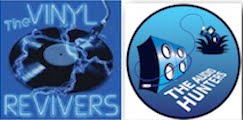

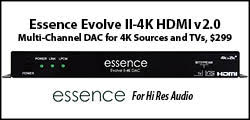

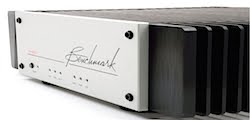


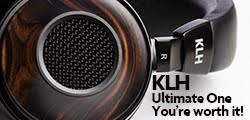
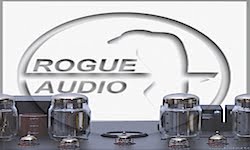

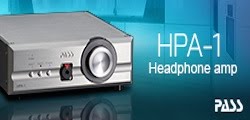


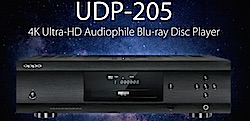


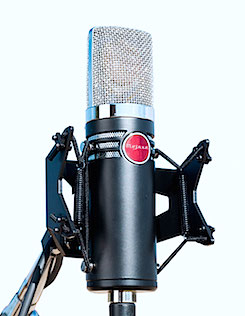
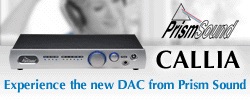
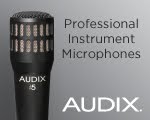
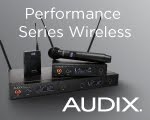
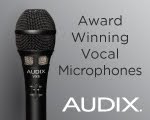
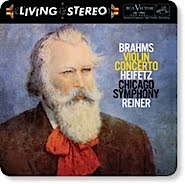






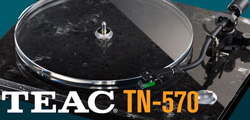





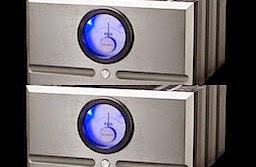
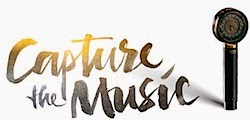


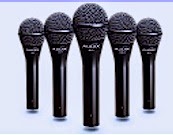


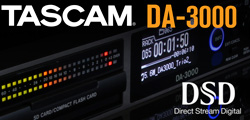

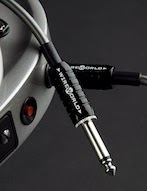

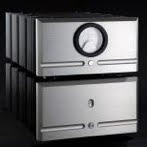









1 comment:
Hi John,
Have you had a chance to hear the new Benchmark Dac3 and wondering how it compares with the Brooklyn?
Post a Comment